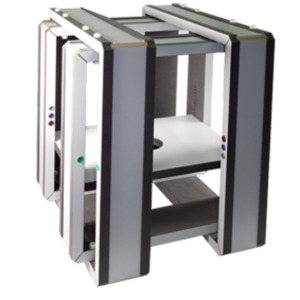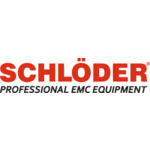
- Description
- Attributes
- Documents
- 3 axes, 50 cm
- Metal-free construction
- For generating magnetic fields with field strengths > 1000 A/m
- DC fields up to 1000 A/m are achievable in the combination HCS(T) 50-28/MGA 1033
A Helmholtz coil consists of two identically wound coils electrically connected in series and symmetrically arranged along a common axis. The special feature is the large homogeneity of the magnetic field in the center between the two coils. Larger Helmholtz coil arrangements can generate interference fields in different spatial axes.
For fixed geometry, the magnitude of the magnetic field is directly proportional to the number of turns and the applied current. When designing the coils, an attempt is made on the one hand to provide as large a number of windings as possible in order to keep the necessary current (and thus the amplifier power) low.
On the other hand, a large number of windings at higher frequencies (MIL-STD-461, for example, requires tests up to 100 kHz) leads to large coil impedances, which in turn lead to impractically high amplifier output voltages.
Since the required field strength decreases with increasing frequency (for the MIL-STD-461 mentioned above, the required test level at 100 kHz drops to less than one-thousandth of the output value at 60 Hz), the ideal solution is to design a Helmholtz coil with two separate windings.
The Helmholtz coils of the HCS series are made entirely of wood materials. Apart from wire and connection sockets, no metal parts are included. The coils are completely covered with a durable laminate - the wire is not visible and thus protected from damage.
